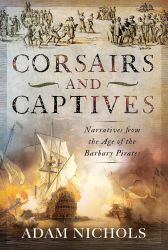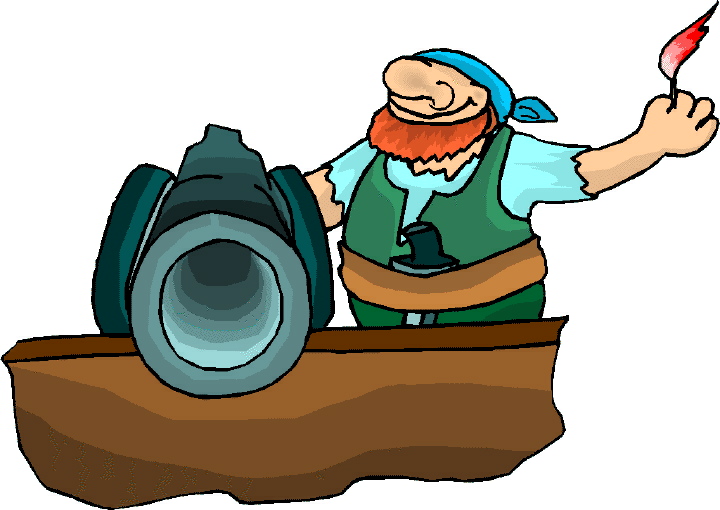 Pirates and Privateers Pirates and Privateers
The History of Maritime
Piracy
Cindy Vallar, Editor
& Reviewer
P.O. Box 425,
Keller, TX 76244-0425
    
Books for
Adults ~ Pirate Captives

Corsairs and Captives: Narratives from the Age of
the Barbary Pirates
by Adam Nichols
Pen & Sword, 2024, ISBN 978-1-03610-607-2, US
$40.00 / UK £25.00
    
He serves in the English navy, but rumors lead him
on a path of piracy. No longer welcome in his
homeland, he heads to Tunis. A single haul labels
him the most successful corsair there, and pamphlet
writers dub him “archpirate” because of his
fearlessness and brutality. His name is John Ward.
Nicholas chooses the sea to seek his fortune.
Instead, he finds himself enslaved. To escape this
misery, he renounces Christianity and becomes an
adherent of Islam. Being a renegade gives him the
freedom to sail, which provides him with an
opportunity to return home to France, where his
conversion means he has to live a lie or hide.
Farming proves not his forte, so he returns to the
sea, where he is captured once again and recognized
as a renegade.
Her ship captured by Barbary corsairs in 1756, Ellen
Marsh finds herself a captive deemed worthy of a
Moroccan prince. A friend poses as her husband to
stave off the prince’s advances until she and her
“husband” are ransomed. She later writes of her
experiences as The Female Captive.
These are but three people who encounter Barbary
corsairs during the nearly three centuries in which
these privateers prowl the waters of the
Mediterranean Sea and Atlantic Ocean. Although these
marauders act like pirates, their attacks are
legally sanctioned by rulers of the Barbary city
states for which they sail: Algiers, Salé, Tripoli,
and Tunis. They seize a wide variety of plunder, but
the most prized booty are the captives of all ages
who end up as slaves to rulers and residents of
North Africa.
Adam Nichols writes in his introduction, “Most of
the stories told about pirates are exaggerations at
best; at worst, they are romantic fabrications. . .
. As a result, Barbary corsairs, and the world in
which they operated, are often depicted in an
oversimplified, distorted way.” (viii) His goal here
is to correct these misinterpretations and
falsehoods by showing these privateers in a more
realistic manner through first-hand narratives,
written by those who witness Barbary captives and/or
experience life as one.
The book consists of two parts: Narratives and
Narrative Texts. Narratives is divided into three
distinct segments. “Corsairs” examines the
privateering business, including methods, economics,
and risks. “Captives” delves into the victims,
focusing on specific encounters for which primary
accounts exist. One of these recounts the capture of
Jacob in 1621, where four sailors find themselves
prisoners of Barbary corsairs during a storm. Two
others discuss Friar Antonio, a clergyman who falls
in love, while a Trinitarian friar named Pierre Dan
is sent to Algiers by Cardinal Richelieu to
negotiate the release of French slaves. The third
segment, “Corsair Captains,” introduces individual
leaders, such as Simon Danseker, Calafat Hassan,
John Ward, and Claes Compaen.
Eight narrative texts comprise the second part of
this book. These include “Captain John Smith on
Pirates and Renegades,” “Captain Henry Mainwaring on
the Suppression of Piracy,” “The Narrative of João
De Carvalho Macarenhas: Captured at Sea by Algerine
Corsairs,” “Father Pierre Dan on the Slave Market in
Algiers,” “Filippo Pananti: Narrative of a Residence
in Algiers,” “The Odyssey of René Du Chastelet des
Boys,” “Francis Brooks: Barbarian Cruelty,” and
“Elizabeth Marsh: The Female Captive.” Each begins
with a brief setup, including the reason for its
selection.
The final chapter, “The View from the Other Shore,”
explains why other books on this subject have fallen
short, which results in readers assuming that “North
Africans were inhuman brutes, while Europeans were
innocents cruelly wronged.” (206) Both groups commit
brutalities and engage in human trafficking. By
concentrating on accounts written by those who
experience or witness the events, Nichols provides
readers with a truer picture of what occurs during
this turbulent time in history.
A center plate section includes pictures of places,
people (officials as well as those who were
enslaved), ships, and the treatment of slaves. There
is a bibliography but no index.
In the introduction, Nichols writes, “Buried in the
dry chronologies are human stories filled with
pathos and danger, fear and bravery, betrayal and
friendship – and love. The original sources just
need a bit of editing to bring out the story element
in them.” (ix) He is upfront about having edited the
original accounts to some degree. Some may object to
this, but his goal is not to provide another tome
for serious scholars; instead, he succeeds in
providing readers with informative, readable, and
compelling true first-person stories that show the
reality and complexity of the strife between North
Africans and Europeans. Equally noteworthy are that
some of these primary accounts have not appeared in
English before, and that Nichols includes tidbits of
information not found in other books on the Barbary
corsairs and how they operated.

Click to contact me
Background image compliments
of Anke's Graphics |

